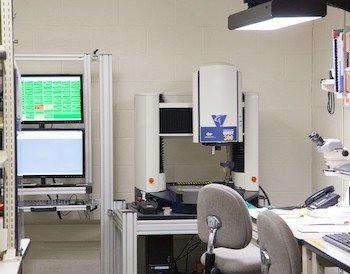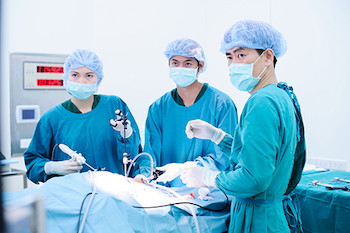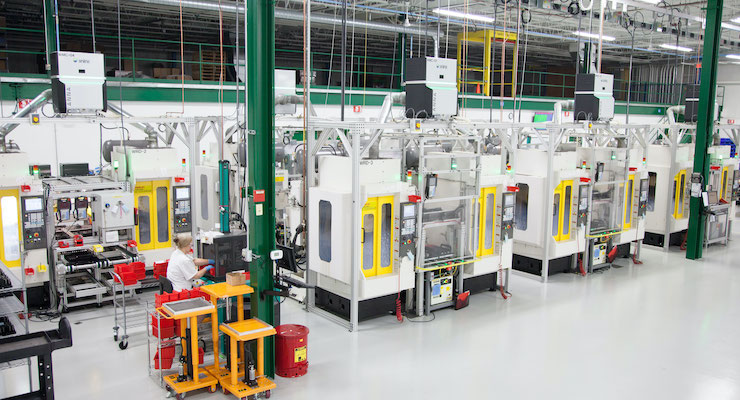For high-precision parts with complex geometries typical of those used in medical device instruments, CNC machining is often the only production method capable of meeting specifications. This is especially true for many of the components used in expanding robotic surgery platforms. Today’s CNC technology can produce critical features with higher precision and tighter tolerances. Because medical device parts and components are so widely dependent on CNC machining, it is important to understand a manufacturer’s CNC strength from an equipment, and also a human capital, standpoint.
Doctors rely upon the precision and quality of their devices and instruments to help deliver positive outcomes for patients. Producing the components for such devices and instruments depends on a diverse skillset and vast understanding of the machines and the metals from which they are made. Our CNC equipment and advanced high-level metrology and inspection systems support the overall success of our medical device parts and components manufacturing, but it only gets you halfway there.

Precision components require a deeper level of metrology. Hobson & Motzer utilizes the latest technology to drive statistically reliable performance.
Our equipment is matched with exceptional programming talent. Hobson & Motzer’s team of applications engineers bring a highly skilled, resourceful, and creative approach to each part we develop. Continuous improvement keeps our team current on the latest advancements in CNC technologies. We also maintain legacy knowledge through successful apprenticeship and training programs and retain a large number of long-standing, dedicated staff. It is more than just producing a good quality part. Combining a heightened technical focus with deep expertise in transforming metal, which we have done for more than 100 years, sets Hobson & Motzer apart. It is a differentiator our customers have come to depend on that favorably impacts the result, their project, and their ability to keep delivering the next generation of medical device innovations.
What people may not know is what CNC programming entails—and it’s not simply pushing buttons so a machine can do all the work. Paraphrasing the old adage that the output is only as good as the input is the key to successful CNC programming. Think of it this way: for every function a human would have to perform manually, a programmer has to establish, technologically, how a human would perform it; someone needs to know how to do that. Maneuvering a cutting tool into a spindle so it will cut a certain way requires definitive skill in a programmer. We use a high-end metrology system, build our own documentation, and control our systems—which helps streamline our focus on the development of the product.
There are multiple considerations that contribute to the technical precision of a CNC-machined part. A programmer needs to implicitly understand many different properties of a variety of materials and how they react when cutting them. There must be core knowledge of how materials react to their own built-up stresses and how the material will move and relieve when specific amounts are removed. Vibration also plays a tremendous role in CNC machining, so a programmer must have expertise in which tools to use and how much material to remove to minimize or control vibration. CNC programmers also contend with how a part is processed, from one operation to the next: how the part is held while it is being machined, the types of cutting tools to be used, and what parameters are applied.

Surgeons rely on the highest quality medical devices for positive patient outcomes. It’s why we apply the strictest quality protocols to every process throughout production at Hobson & Motzer.
Hobson & Motzer began as a metal stamping manufacturer and has morphed into a company perpetually invested in diverse and advanced manufacturing technologies focused on products used in all forms of medical device and instrumentation. Our forward-thinking philosophy has enabled us to manufacture the impossible—often pushing the limits of man, machine, and material. Many clients have brought their critical projects to us after being told by other companies that the job could not be done, the tolerances could not be held, or the process could not be controlled. We are also frequently brought in when other manufacturers’ attempts have failed.

Ultra precision, five-axis capability paired with industry leading application engineers complement the First Step program.
Our First Step team provides sound manufacturing input from inception to production, with a suite of manufacturing experts who deliver unparalleled support. This adds 100+ years of manufacturing experience on each customer’s team, providing:
- Precision tolerance prototypes
- Deep collaborative approach & execution
- High-level metrology & data collection
- Learning curve continuity from development to launch
- Fast turnaround
- 80+ high-precision, high-speed CNC machines
- 3-, 4-, and full 5-axis capability
We also maintain control over the manufacturing process with post-production operations that include finishing, deburring, laser welding and marking, surface printing for identification, specific coatings, and an assortment of in-house developed processes particular to the product itself. Hobson & Motzer excels with products that require more than a single operation or products that require multiple manufacturing processes, ensuring accountability and continuity in our protocols and the highest quality, precision, and repeatability in customers’ parts and components.
Legacy knowledge, a deeply collaborative approach—internally and with customers—along with our vertically integrated secondary operations, gives customers access to a complete suite of services and capabilities, exceptional support, and over 100 years of manufacturing expertise.
Click here to learn more.













